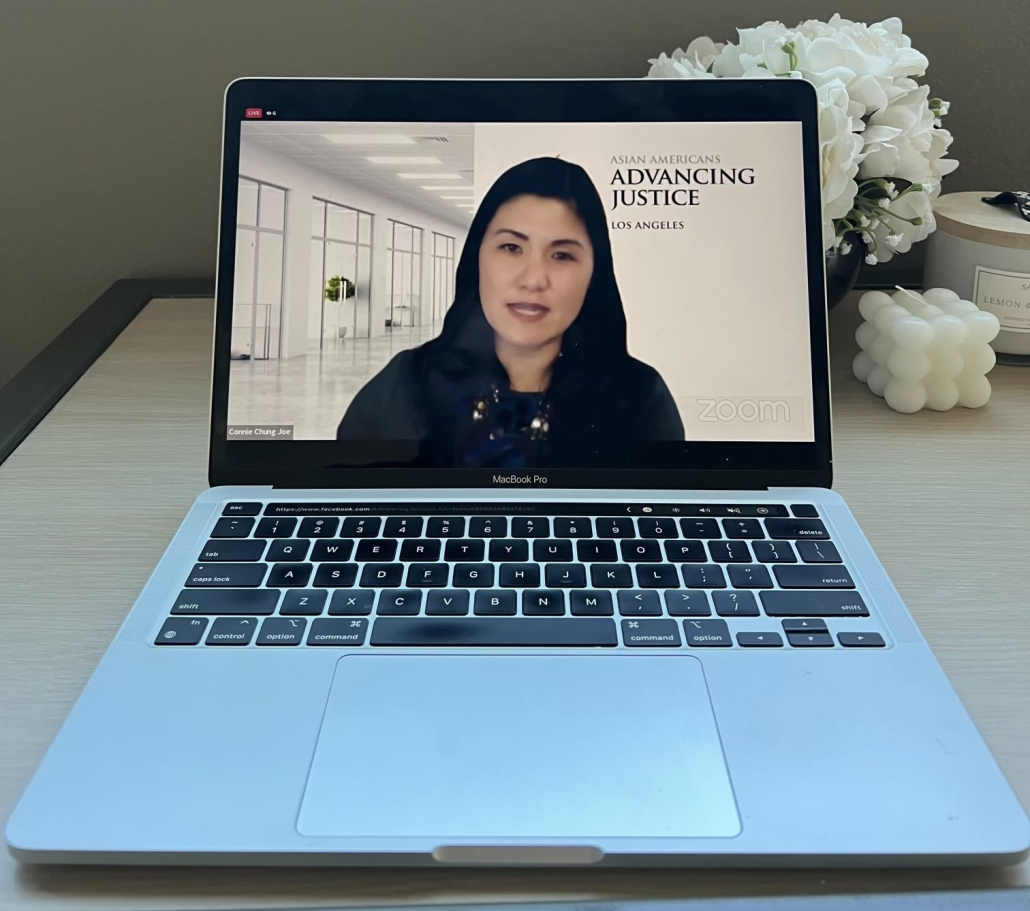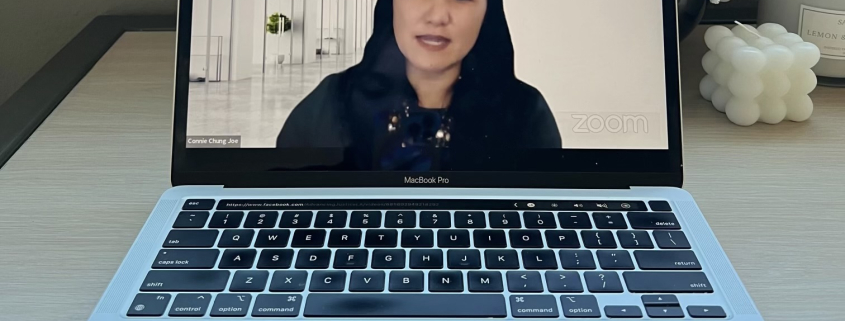Panel discusses media coverage of the Los Angeles Uprising

Content warning: This article contains references to violence.
On March 16, 1991, Latasha Harlins, a 15-year-old Black girl, entered the South Los Angeles liquor store belonging to Soon Ja Du, a Korean immigrant. Harlins entered the store, put a bottle of orange juice worth $1.79 in her backpack and approached the store counter. Du accused Harlins of stealing, and when Harlins turned toward the exit after a scuffle, she was fatally shot in the back of her head by Du.
Du went to court and was convicted of voluntary manslaughter with a sentence — five years of probation, 400 hours of community service and a fine — that incited animosity from L.A.’s Black community.
On March 3, 1991, a graphic video of four Los Angeles police officers — three of them white — beating Rodney King, a Black man, was broadcast nationally. King, on parole for robbery and pursued by police in a high-speed chase, was kicked and beaten for 15 minutes with an audience of another dozen officers. A jury found the four officers not guilty.
Almost a year following Harlins’s death, residents from her neighborhood set fire to hundreds of Korean-owned businesses while chanting her name.
Nearly 30 years following the L.A. Uprising, also described as the 1992 “L.A. Riots” by dominant media outlets, Asian Americans Advancing Justice hosted a panel of civil rights experts and media critics to discuss media coverage of the Uprising through a retrospective lens.
Panelists included jarrett hill, president of the National Association of Black Journalists of L.A. and adjunct instructor of journalism at the Annenberg School for Communication and Journalism; Angela Oh, co-founder of the National Asian Pacific American Bar Association; Connie Rice, co-founder of the Advancement Project and Urban Institute; Stewart Kwoh, president emeritus and founder of the Asian Americans Advancing Justice — Los Angeles. Connie Chung Joe, the CEO of Asian Americans Advancing Justice, hosted the panel.
Chung Joe started with an overview of the events that occurred on L.A. streets 30 years ago. She stipulated that media portrayals of Harlins’ case created misinterpretation of the facts.
“Our criminal justice system put the Korean immigrant woman’s life at a higher value than that of a teenage girl — who was Black; and when the [four officer’s] verdict came down in the King beating just a few months later, [the injustices] showed once again how anti-Black our criminal justice system was,” Chung Joe said.
She spoke on how the uprising had disproportionately affected Korean businesses, with 40% of them suffering damages in the aftermath. As Koreatown burned down, Chung Joe said desperate calls for 911 from Korean shop owners were ignored while police and firefighters gathered instead to protect Beverly Hills.
Chung Joe said that the media framing of Korean and Black communities — Koreans portrayed as “vigilantes on store rooftops with guns shooting down on the street” and the Black community said to be “burning down buildings and looting stores” — provided little to no context surrounding the systemic racism and oppression the two communities faced leading up to Saigu.
AAAJ noted that mainstream media at the time exacerbated divisions between Korean business owners and the Black community by using “race-related” instead of “injustice-related” violence.
“It is such a complicated and dense topic that we knew we could not do it justice in a one hour Zoom,” Chung Joe said. “Our goal ended up being … [to] see if we can help frame the way the media will cover the L.A. Uprising … It will help the media think about the way they frame race and race relations and give it a little bit more thoughtfulness.”
Monica Lozano, president of the College Futures Foundation and the event’s moderator, asked the panelists to provide context about the struggles the Black community endured 30 years ago. Rice said that, by 1991, the Black community witnessed 80,000 jobs leave South Central with little remedy or coverage by the government and mainstream media outlets.
“Dominant media didn’t cover it very much and it was covered somewhat in the African American paper Los Angeles Sentinel, but when your entire economic base and job base leaves, you’re going to have a real gap there and people fell through the cracks,” Rice said.
Rice presented clarifying details — lack of opportunity, lack of accessibility and police brutality — to illustrate to viewers the Black community’s conditions during the 1990’s.
“The dominant media covered most of Black L.A. as deprivation and violence, because that’s what the elite communities fear,” Rice said. “We were focused on building skyscrapers downtown, we weren’t focused on building communities and building families and reinvesting in the infrastructure that created the upward mobility.”
Oh said that because the Korean community in the ’90s was composed of mostly first generation individuals, they were unprepared for the Saigu. She added that Koreans only read about owners being assaulted, burglarized and killed in their small businesses from Korean news. While the facts remained the same in American and Korean news, the panel discussed subtle nuances in language that created harmful rhetoric fueling stereotypes for both groups.
“If your identity was ethnic Korean, you were shaken by what you saw,” Oh said. “People have asked me: ‘Well, why were [Koreans] in those communities?’ This was where they could go, and they didn’t have any special programs.”
Kwoh, a writer at the Korea Times who was concerned about the L.A.Times’ coverage of the incident, wrote a letter to the editor at the time to “tone it down” because it would incite only greater misunderstanding. Kwoh stated that even though only a very small percentage of Korean Americans have tried to protect their businesses with guns, the L.A. Times had used a picture displaying Korean Americans with “guns on rooftops shooting down on people.”
Following up on his letter, Kwoh met with then-L.A. Times editor Shelby Coffey. Kwoh’s successful advocacy of precise language led Coffey to hire Chung Joe to better engage and understand the communities the paper was reporting on.
“It was about having reporters who live in the community, who know the community, who speak the language of the community and could really understand the issues,” Kwoh said. “The lesson I learned is that you do have to confront the powers that be … because, if you don’t, you just accept a media that doesn’t uphold a multiracial democracy.”
Hill said the media’s goal has always been profit and that the purpose now is to change the system and bend it to the needs of what we need it to reflect now.
“I think it’s important that we always recognize, one: what these systems were set up to do; but then second: the ways in which we can begin to change them and be more inclusive and diverse and equitable to be able to better address the community issues that we are creating, but also exacerbated,” hill said.
Prospective journalists entering the field should take a stand to uphold diverse context, Rice said, and read up on the history of the stories they’re covering.
“You’ve got to fight to get your articles that cover both the conflicts as well as the emerging alliances in these communities,” Rice said. “When you have a journalist covering South Los Angeles and the violence, give the context to that.”

